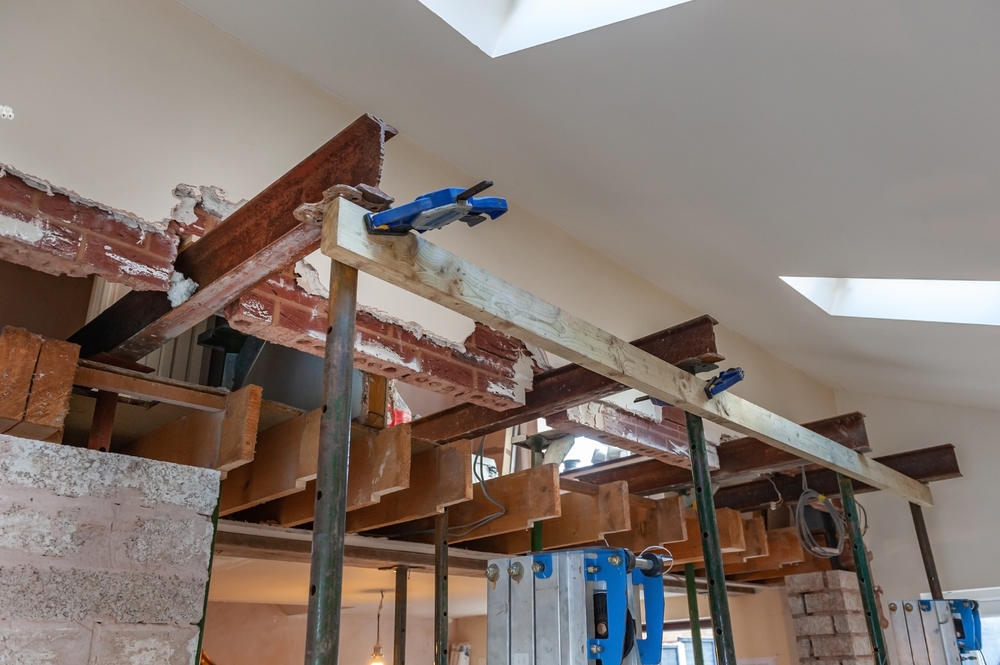The Importance and Process of Removing Load-Bearing Walls

Load-bearing walls, the silent guardians of our structures, play a crucial role in maintaining the integrity and stability of buildings. However, there are times when the need arises to remove them, whether for renovation, expansion, or aesthetic enhancements. In this article, we delve into the intricacies of load-bearing walls, why they may need to be removed, and the process involved in doing so. destruction mur porteur
Understanding Load-Bearing Walls
Load-bearing walls are not just ordinary partitions; they carry the weight of the structure above them, ensuring that the building remains standing. Typically, these walls are constructed from sturdy materials such as concrete, brick, or steel, and their design is meticulously calculated to bear the imposed loads.
Differentiating between load-bearing and non-load-bearing walls is essential before any demolition work begins. Load-bearing walls are strategically placed to support the floors, roof, and any additional weight, while non-load-bearing walls serve primarily as dividers between rooms.
Signs Your Wall is Load-Bearing
Identifying whether a wall is load-bearing or not is crucial before considering its removal. Signs such as cracks, sagging ceilings, or doors that no longer close properly may indicate structural issues. Consulting with a structural engineer is recommended to assess the situation accurately and determine the feasibility of removing the wall safely.
Reasons for Removing Load-Bearing Walls
The decision to remove a load-bearing wall is often driven by the desire to renovate or reconfigure living spaces. Whether it’s creating an open-concept layout, expanding a room, or enhancing natural light flow, removing load-bearing walls can significantly transform the functionality and aesthetics of a space.
The Process of Removing Load-Bearing Walls
Removing a load-bearing wall is not a task to be undertaken lightly. It requires careful planning, structural assessment, and adherence to building codes and regulations. The process typically involves obtaining permits, installing temporary supports to ensure structural stability, demolishing the wall, and then reinforcing the structure as needed.
Challenges and Risks
While removing a load-bearing wall can yield desirable results, it also comes with inherent challenges and risks. Structural instability, compliance with building codes, and safety precautions are critical considerations throughout the process. Hiring professionals with experience in structural engineering and construction is advisable to mitigate these risks effectively.
Alternatives to Removing Load-Bearing Walls
In some cases, removing a load-bearing wall may not be the only solution. Installing beams or columns, creating openings, or incorporating architectural features can achieve similar results while maintaining structural integrity. Consulting with a design professional can help explore alternative options tailored to specific needs and preferences.
Cost Considerations
The cost of removing a load-bearing wall varies depending on various factors such as the size of the wall, structural complexity, and labor involved. On average, homeowners can expect to invest a significant amount in such projects. However, the long-term benefits in terms of enhanced living space and property value often outweigh the initial expenses.
Benefits of Professional Assistance
Seeking professional assistance from qualified contractors or structural engineers is paramount when dealing with load-bearing walls. Their experience, expertise, and knowledge of local building codes ensure that the project is executed safely and efficiently. Moreover, professionals can provide valuable insights and recommendations tailored to individual requirements.
Conclusion
Load-bearing walls are indispensable components of building structures, providing essential support and stability. However, there are instances where their removal becomes necessary to accommodate evolving needs and preferences. By understanding the importance of load-bearing walls, recognizing the signs indicating their presence, and following a systematic process, homeowners can successfully navigate the complexities of wall removal projects while ensuring the safety and integrity of their homes.
